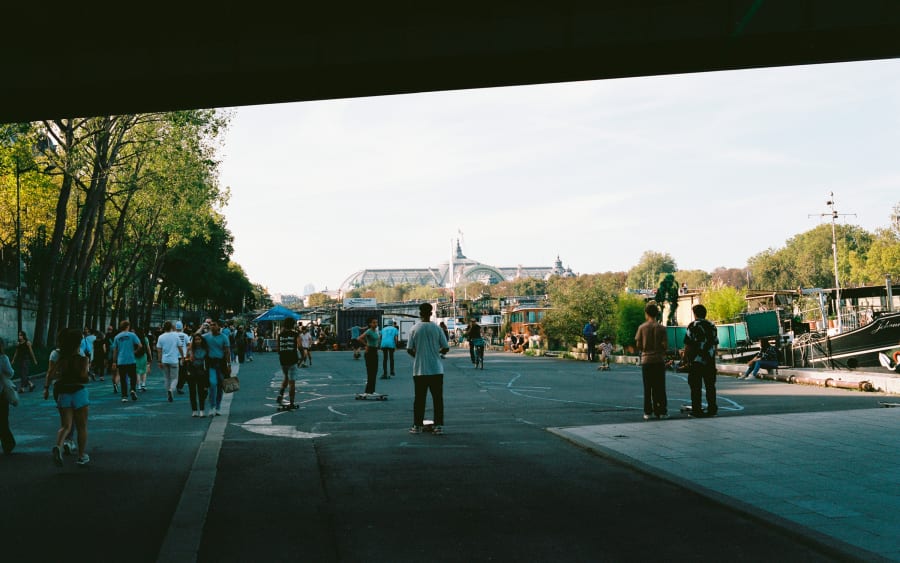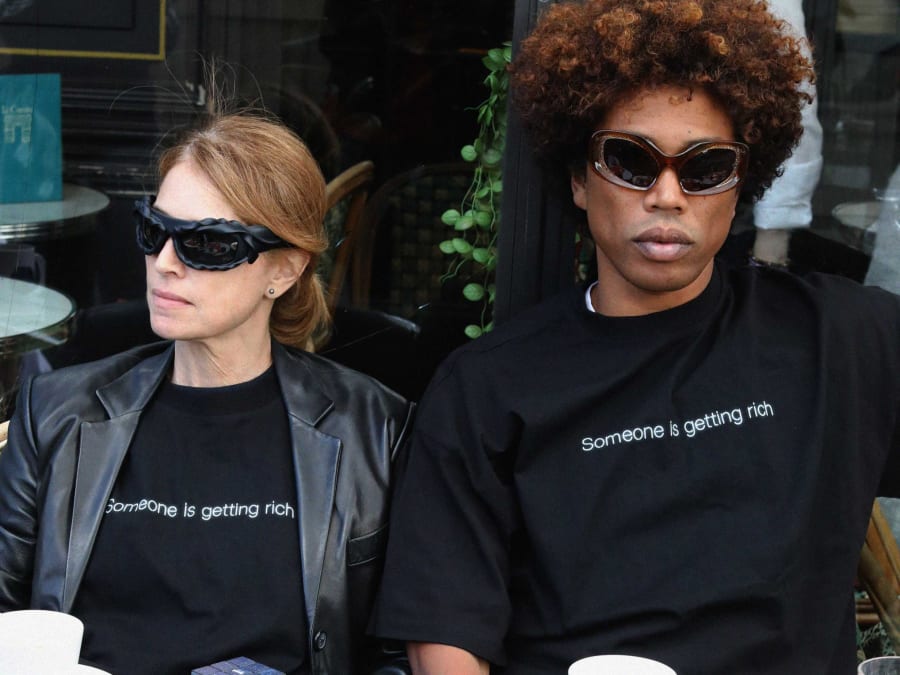With Art Basel Paris underway, galleries are reporting impressive sales across all sectors of the fair. From significant historical pieces by female artists to a range of works by emerging talents, the fair has already seen numerous notable acquisitions by private collectors and institutions.
At White Cube, Julie Mehretu’s Insile (2013), a monochromatic work that melds architectural drawing and abstract gestures, sold for USD 9.5 million. Often based on real locations – in this case Iraq, addressing the aftermath of the Arab Spring – her paintings nonetheless dissolve into what the artist describes as ‘story maps of no location.’
At Lisson Gallery’s booth, important works by Colombian textile artist Olga de Amaral were acquired by a private American collection. Since the 1960s, de Amaral has pushed boundaries by marrying Modernist principles with pre-Columbian influences into her large-scale abstract textile pieces. Works sold included the acrylic-painted tapestry Lienzo 29 (2001), for USD 350,000; the hanging linen sculpture Nudo 23 (plata 5) (2014), for USD 400,000; and the shimmering gold-leaf wall work Viento Oro (2014), for USD 800,000.
Meanwhile, at Galerie Cécile Fakhoury’s booth, Paris-based artist Marie-Claire Messouma Manlanbien showcased works made from organic materials including horsehair, clay, salmon leather, and semi-precious stones. Manlanbien’s diverse practice fuses diverse influences including pop culture, Ivorian matriarchy, and Creole culture in Guadeloupe. Three standout tapestries captivated collectors: Human Intra Natura, Nuit (2024) sold for EUR 22,000; Organic Landscape - la Nuit (2024) for EUR 30,000; and Cure and Care (2024) for EUR 60,000.
In another highlight for female artists, Ortuzar Projects sold everything at the booth, with a series of six new paintings by Takako Yamaguchi each selling for USD 300,000. Yamaguchi – who participated in this year’s Whitney Biennial – creates works blending abstraction and representation, featuring enchanting seaside scenes with distinct horizon lines separating waves and clouds.
The Emergence sector is dedicated to solo presentations by emerging artists. A solo presentation at Paris-based gallery Petrine showcases the work of Pierre Allain, a young French artist who draws on scientific analysis and industrial design to explore the vulnerabilities of both human and non-human bodies. Three of his 2024 ‘Passive Lens’ sculptures sold for EUR 3,000, along with the pencil-on-paper work Self-Diagnosis (X) (2024), which fetched EUR 2,000.
Another French artist was the subject of a notable sale at Mennour’s booth, where Bertrand Lavier’s Boulevard Haussmann, N°3 (2013) sold for EUR 130,000. The inkjet print on canvas presents lush, swirling brushstrokes layered over a flat surface. Lavier’s work blurs the boundary between painting and sculpture, using what he calls ‘demonstrations’ to challenge conventional perspectives. Since the 1980s, his signature approach has involved layering everyday objects with expressive, thick brushstrokes, transforming them into hybrid works that are both painted objects and representations of themselves.
History would be mistaken to remember Juliette Roche as merely the wife of Albert Gleizes – the French artist was a distinguished writer and painter in her own right. Influenced by Les Nabis, her paintings depict independent women, angular animals, and bustling social scenes in rich texture and deep colors. Forty years after her death, sales at Galerie Pauline Pavec’s booth highlight Roche’s continued relevance, with Femme allongée (c.1930) selling for EUR 80,000 to a major American collection, and Fillette au noeud (c.1930) for EUR 18,000 to a notable French artist couple.
It goes without saying that Jesse Darling, the 2023 Turner Prize winner, is having a major moment. His presence is visible even before visitors enter the fair, with the large-scale sculpture VANITAS (2024) – a tangle of mangled metal barriers – installed inside the Petit Palais as part of the Public Program. Consistent with recent themes in Darling’s practice, this piece reflects on the fragility of power structures and gestures toward looming social collapse. Inside the fair, at Sultana’s booth, five pieces sold, including Deeds III (2023) for EUR 20,000 and Regalia & Insignia (2018) for EUR 18,000.
Two further seven-figure sales were for paintings by female artists. One of them was Alice Neel’s oil painting Irma Seitz (1963), which sold for USD 1.2 million. Renowned for her intimate and candid portraits painted from life, Neel is one of the most celebrated figurative painters of the 20th century, making her work highly sought after around the globe. In this canvas, Neel depicts the philanthropist and painter Seitz with her legs crossed, wearing a white dress and heels, gazing outward while holding a cigarette with a chicness so natural that it might even be described as French.
Finally, one of Surrealism’s most enigmatic forces, Meret Oppenheim, continues to draw interest in France. It was almost 90 years ago that her fur-covered teacup, Object, stirred intrigue at the 1936 Surrealist exhibition in Paris. From then on, solidified as a key female figure in the movement, she would provoke audiences with her daring explorations of eroticism and femininity. This year, it was her 1934 figurative painting Anatomie d’une femme morte (1934) – depicting a possibly decapitated figure – that turned at least one head in Paris, fetching USD 1.5 million at Michael Werner’s booth.
Art Basel Paris runs at Grand Palais from October 18 to 20, 2024. Learn more here.
Elliat Albrecht is a writer and editor based in Canada. She holds a BFA in Critical and Cultural Practices from Emily Carr University of Art + Design and an MA in Literary and Cultural Studies from the University of Hong Kong.
Caption for top image: a view of Art Basel in Paris 2024. © Art Basel
Published on October 17, 2024.


